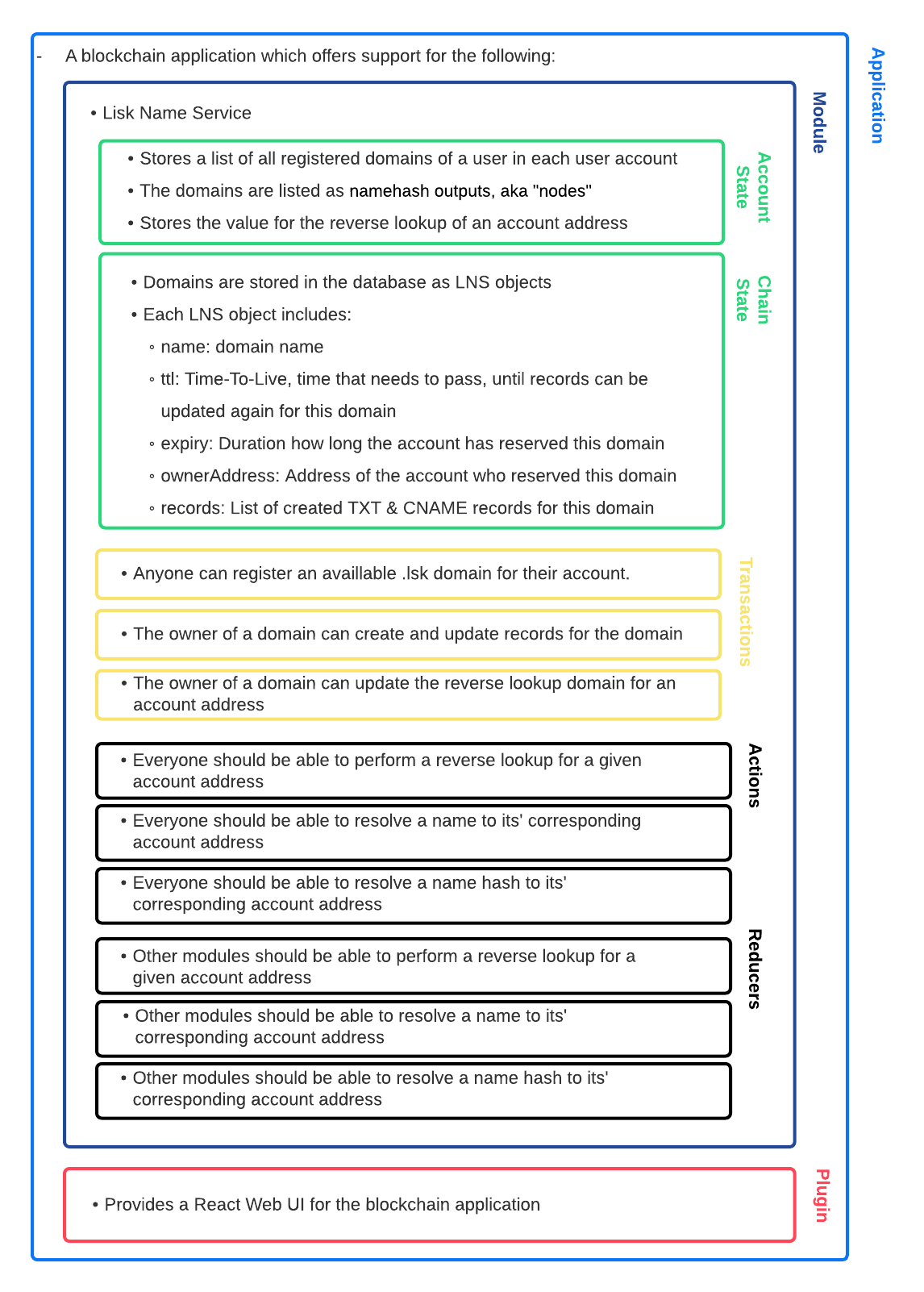Lisk Name Service (LNS) Tutorial
How to create a blockchain application that offers a domain name service for blockchain accounts, similar to the Domain Name System, (DNS), and the Ethereum Name Service, (ENS).
This service allows an account to register one or multiple .lsk domains for a certain amount of time, (1-5 years).
If an account registers a domain, it becomes a human readable identifier for the account and can then be used to refer to the account instead of the (less human-readable) Lisk32 account address.
Additionally, it is possible to create TXT and CNAME records for each domain owned by an account.
Chapters
| Chapter | Content |
|---|---|
This chapter covers how to perform the following:
|
|
This chapter covers how to perform the following:
|
|
This chapter covers how to perform the following:
|
|
This chapter covers how to perform the following:
|
